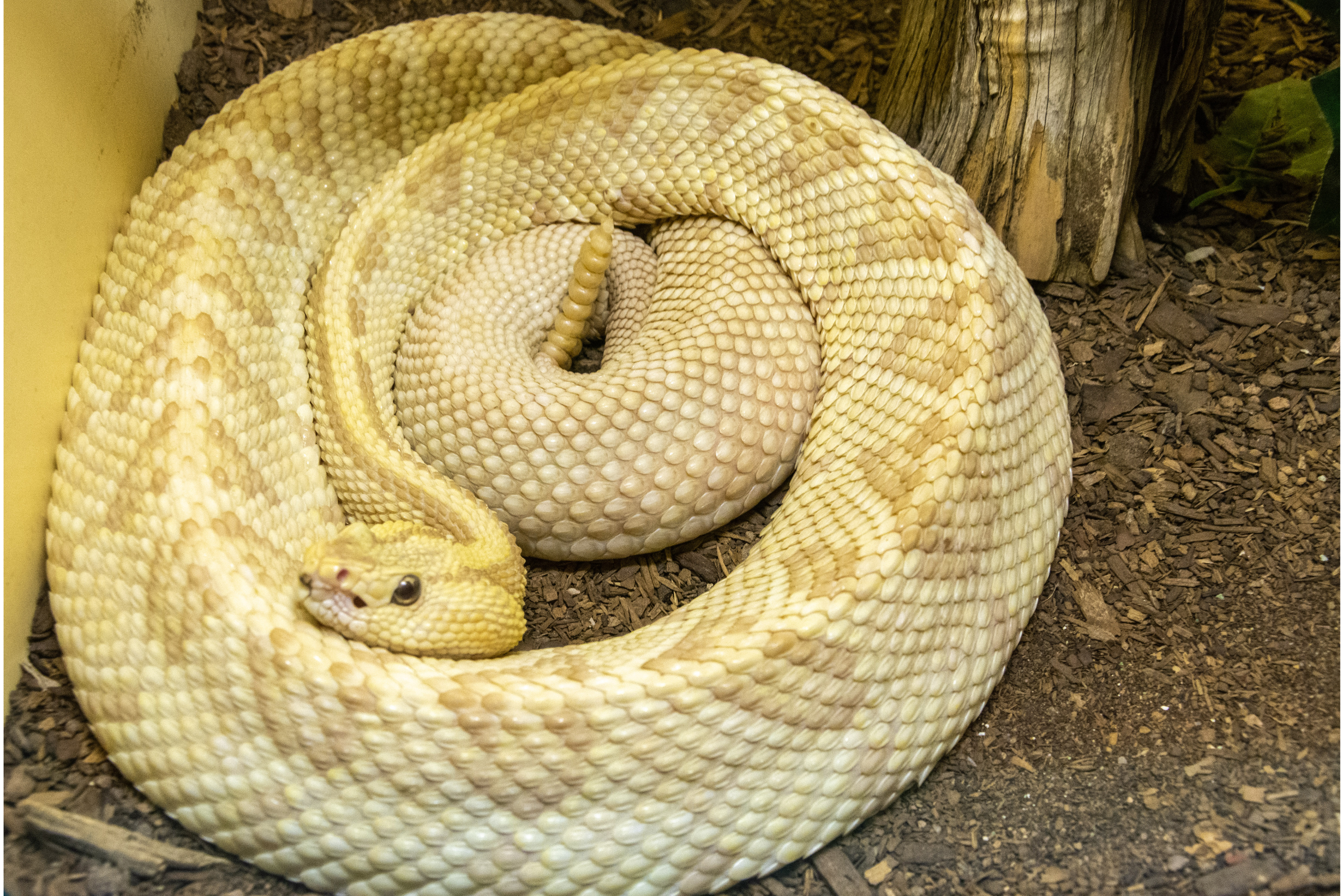Cascabel Rattlesnake
(Crotalus culminatus)

Description
Crotalus is a genus of venomous pit vipers in the family Viperidae, known as rattlesnakes or rattlers. The genus is found only in the Americas from southern Canada to northern Argentina, and member species are colloquially known as rattlesnakes. The generic name Crotalus is derived from the Greek word krótalοn, which means "rattle" or "castanet", and refers to the rattle on the end of the tail, which makes this group (genera Crotalus and Sistrurus) so distinctive. Currently, 32 to 45 species are recognized as being valid. Members of the genus Crotalus range in size from only 50–70 cm (20–28 in) (C. intermedius, C. pricei), to over 150 cm (59 in) (eastern and western diamondback rattlesnakes). In general, adult males are slightly larger than females. Compared to most snakes, they are heavy-bodied, although some African vipers are much thicker. Most forms are easily recognized by the characteristic rattle on the end of their tails, although a few island populations form exceptions to this rule: C. catalinensis has lost its rattle entirely, Crotalus lorenzoensis usually has no rattle, and both Crotalus ruber lucasensis and Crotalus estebanensis exhibit a tendency for rattle loss. The rattle may also be lacking in any species due to a congenital abnormality. The rattle consists of a series of loosely interlocking hollow shells, each of which was at one point the scale covering the tip of the tail. In most other snakes, the tail tip, or terminal spine, is cone-shaped, hardly any thicker than the rest of the skin, and is shed along with it at each successive molt. In this case, however, the end scale, or "button", is much thicker and shaped like a bulb, with one or two annular constrictions to prevent it from falling off. Before each molt, a new button will have developed inside the last one and before the skin is shed off its body, the tip of new button shrinks, then loosening the shell of the previous one. This process continues so the succession of molts produces an appendage consisting of a number of interlocking segments that make an audible noise when vibrated. Since younger specimens may shed three or four times in a year, every time adding a new segment to the rattle, the number of segments bears no relation to the age of the snake. The genus Crotalus is found in the Americas from southern Canada to central Argentina.
Taxonomic tree:







